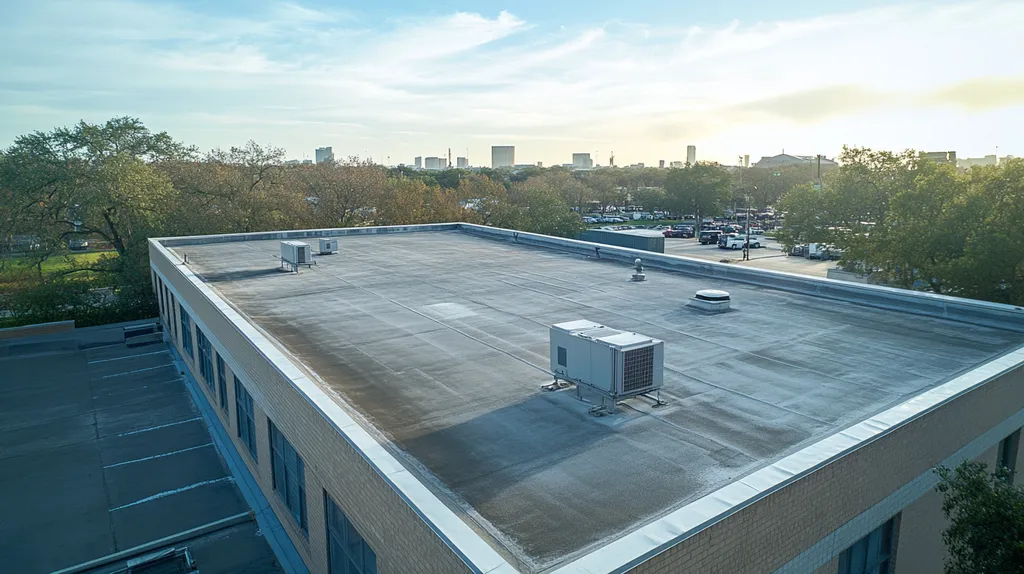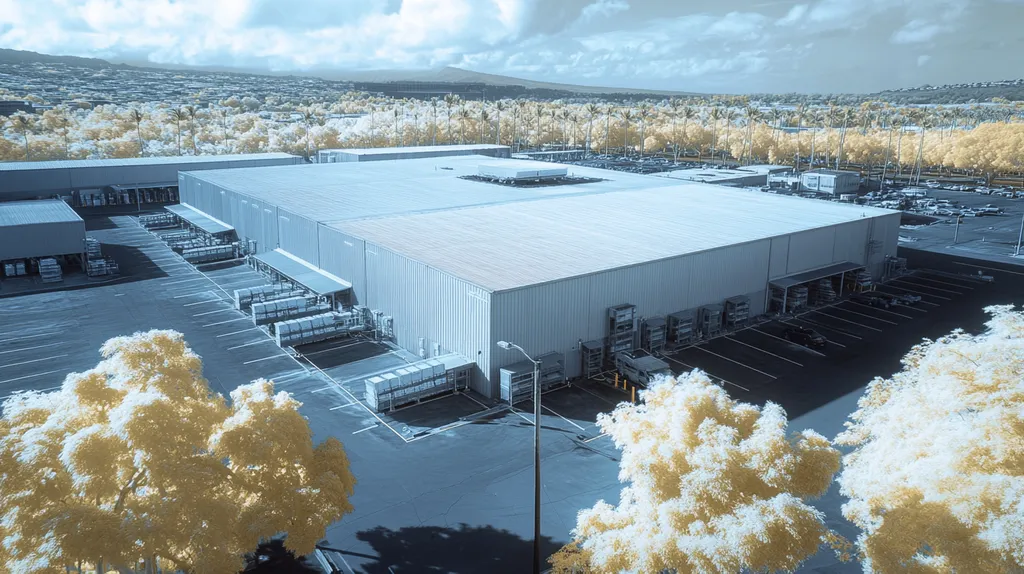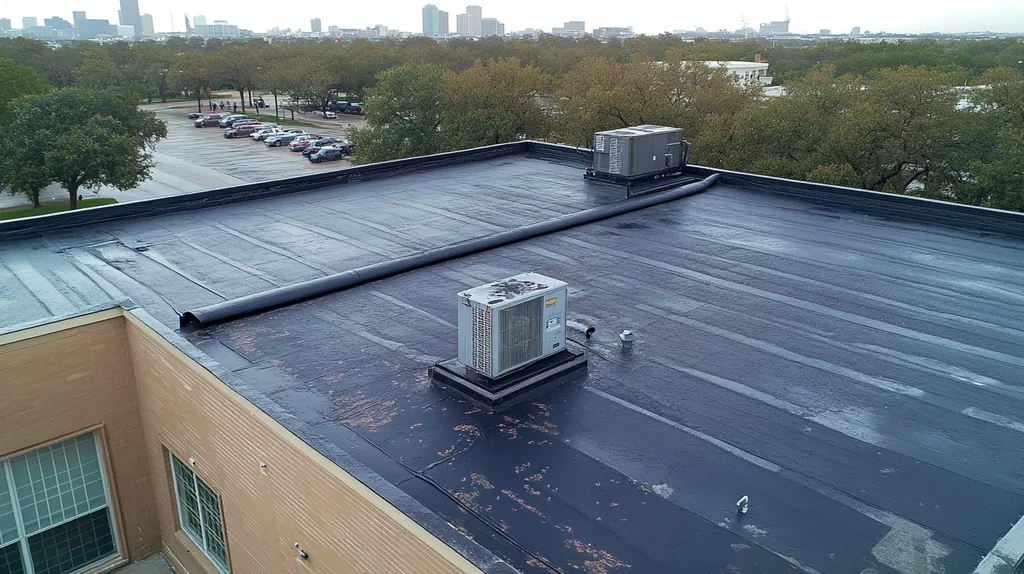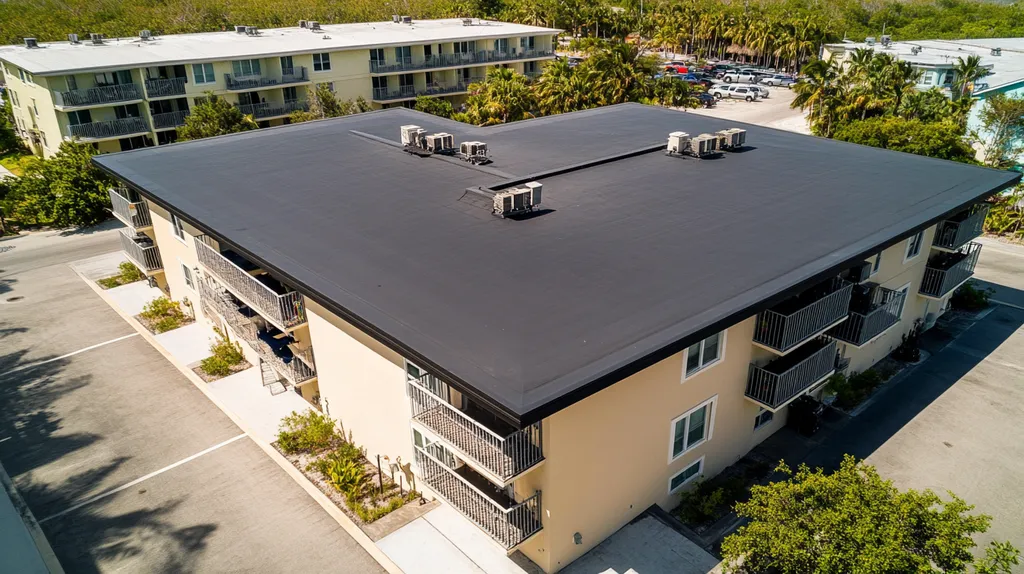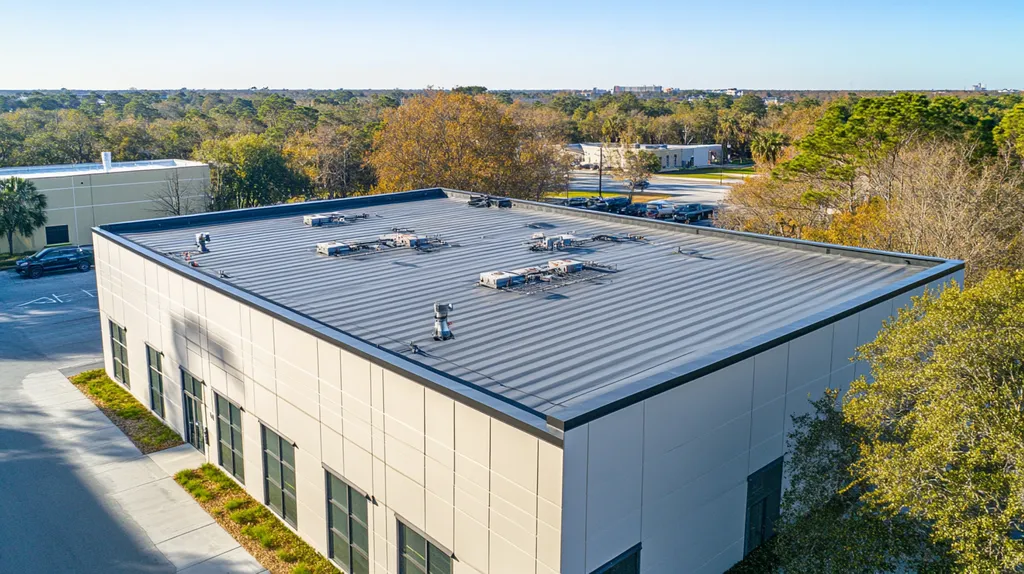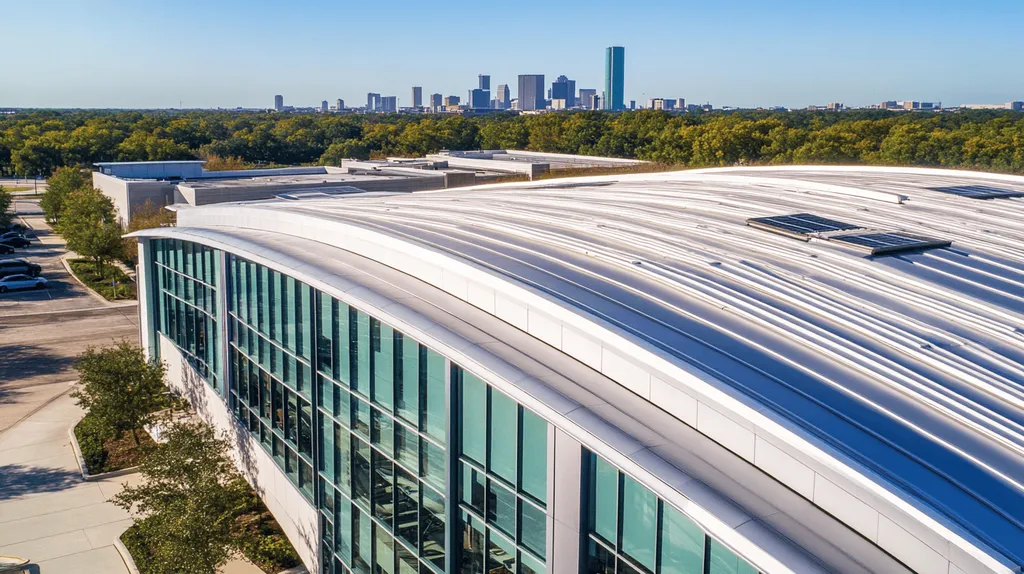Pest infestations cost U.S. commercial properties over $6.8 billion annually in repairs and lost revenue, with roofing systems serving as the primary entry point for 82% of documented cases.
For facility managers, selecting the right pest-resistant roofing materials has become increasingly critical as evolving building codes and environmental regulations reshape compliance requirements.
This comprehensive guide examines the key performance factors, financial considerations, and operational protocols necessary for implementing effective pest-resistant roofing solutions in commercial and industrial facilities.
SECTION 1: PERFORMANCE FACTORS
Choosing the right roofing material is vital in the ongoing battle against pests. According to the National Pest Management Association, commercial buildings with pest issues face rising repair costs, decreased employee satisfaction, and potential health risks. For facility managers, selecting pest-resistant roofing options is not just a matter of preference—it’s essential for performance in various critical areas.
Assessing Damage Resistance
Damage resistance is essential for any commercial roofing system. Roofs capable of withstanding hail, strong winds, and punctures reduce the chances of pests gaining entry. For example, EPDM and TPO membranes are well-known for their toughness against physical harm and environmental challenges.
A properly installed roof should also have effective sealing around edges and penetrations, minimizing potential access points for rodents and insects. Regular inspections and maintenance further enhance a roof’s damage resistance, which is key to long-lasting durability.
Selecting materials with proven impact resistance helps property owners avoid the expensive repairs that can arise from pest-related issues. A solid roof provides significant protection for the building’s overall structural integrity.
Key Action Items
Evaluating Material Durability
Material durability is a key factor when selecting roofing systems that minimize pest infiltrations. Roofing made from resilient materials, such as metal or quality architectural shingles, significantly lowers the risk of pests finding their way inside. These dependable materials resist wear and degradation, which often lead to entry points for infestations.
As roofs deteriorate, they can develop cracks or gaps, creating potential hideaways for pests. Utilizing thicker membranes, like PVC, not only withstands environmental damage but also deters pest activity due to their robust nature.
Moreover, certain roofing materials are combined with pest-resistant additives or coatings, further enhancing their durability while preventing infestations. By focusing on long-lasting materials, facility managers can achieve substantial cost savings by reducing the need for frequent pest-control interventions.
Key Action Items
Measuring Energy Efficiency
Energy efficiency, often neglected, plays a crucial role in pest deterrence. Roofs that effectively manage heat and moisture create environments that are less appealing to pests. For instance, reflective roofing materials help regulate the internal temperatures of commercial buildings, minimizing moisture build-up.
Excess moisture attracts insects and rodents, making energy-efficient roofs more effective in keeping such pests away. Proper insulation also helps control temperature fluctuations, making it less hospitable for pests that thrive in uncontrolled conditions.
Furthermore, energy-efficient roofs can lead to lower utility bills, providing a clear financial advantage for facility managers. A roof that excels in energy efficiency and pest resistance offers dual benefits by enhancing the structure’s protection and boosting the bottom line.
Key Action Items
SECTION 2: FINANCIAL CONSIDERATIONS
Facility managers face increasing financial pressures when selecting roofing solutions. While investing in pest-resistant materials may involve a higher initial cost, the long-term benefits can lead to substantial savings. By thoroughly understanding installation costs, maintenance expenses, and energy efficiency, managers can make informed decisions that protect both the budget and building integrity.
Initial Installation Costs
The upfront costs for pest-resistant roofing systems can exceed those of traditional options. Materials specifically designed to deter pests, such as reinforced membranes and specialized coatings, typically carry a premium price tag. However, these enhanced products are engineered for durability, making them a wise investment for long-term protection.
For instance, a TPO (thermoplastic polyolefin) membrane that incorporates pest-repellent technology may have a higher initial cost than standard TPO. Yet, this additional expenditure is an investment in safety and durability that can prevent costly repairs related to pest issues.
Moreover, installation costs can vary based on the specific size and complexity of the roofing system. Consulting with a roofing expert can help facility managers obtain detailed quotes tailored to their building’s requirements.
Key Action Items
Long-Term Maintenance Expenses
Pest-resistant materials can significantly impact long-term maintenance costs. While regular upkeep is essential for all roofing systems, pest-related damage can quickly inflate these expenses. By opting for materials that minimize infestations, managers can reduce the frequency and costs associated with repairs.
For example, roofs featuring pest-resistant characteristics may require less frequent applications of pest control measures. By tackling issues before they escalate, facility managers can save significantly over the roof’s lifespan.
Additionally, pest-resistant roofs often endure longer than traditional systems, which can delay replacement costs and their associated burdens. Overall, the reduction in maintenance needs can yield substantial cost savings across the roofing lifecycle.
Key Action Items
Potential Energy Savings
The energy efficiency of pest-resistant roofing systems also offers financial advantages. Many of these materials are designed to improve insulation and reflectivity, resulting in lower energy costs. This aspect is especially crucial for large commercial buildings that require substantial energy for heating and cooling.
For example, reflective roofing coatings can lower reliance on air conditioning by keeping roofs cooler, thus reducing overall energy expenditure. These energy savings can often offset initial investment costs over time.
Beyond cost savings, energy-efficient roofs contribute positively to sustainability goals and may even qualify for tax incentives or rebates. Facility managers should weigh potential energy savings when considering pest-resistant roofing solutions.
Key Action Items
SECTION 3: COMPLIANCE REQUIREMENTS
Facility managers must navigate a complex landscape of compliance requirements when selecting pest-resistant roofing options. Ignoring these regulations can lead to hefty fines and reputational damage, creating hurdles in both project execution and property management. Understanding local pest control laws, building codes, and environmental assessments is essential for making informed and compliant roofing choices. This section outlines the key compliance issues to consider.
Regulatory Pest Controls
Facility managers need to adhere to local and state regulations concerning pest control in commercial buildings. These regulations may require specific pest-resistant materials or treatments for roofing installations, and non-compliance can result in financial penalties and potential damage to the building’s integrity.
Moreover, there are often strict rules regarding the use of pesticides and chemicals in roofing solutions, designed to safeguard public health and the environment. Understanding and complying with regional pest control laws are vital to prevent future complications.
Some municipalities mandate the use of non-toxic materials for pest deterrence, emphasizing the importance of selecting roofing systems that meet or exceed these regulatory criteria. Staying informed ensures facility managers can recommend compliant options, protecting their properties from regulatory scrutiny.
Key Action Items
Building Code Compliance
Compliance with building codes is essential to ensure safety and efficiency in roofing installations. When selecting pest-resistant roofing, adherence to these codes is non-negotiable, as violations can lead to significant structural issues and could halt operations during inspections.
Building codes vary by location and often include specifications for roofing material properties and installation procedures. For example, fire-resistant materials might be required in certain areas, adding complexity to material selection.
Additionally, warranties for many commercial roofing systems must align with building code requirements. Selecting compliant materials and installation processes not only reduces penalties but also enhances the facility’s long-term operational safety.
Key Action Items
Environmental Impact Assessments
Compliance increasingly involves assessing the environmental impact of roofing materials. Many regions require environmental assessments before major renovations or new constructions. These evaluations consider potential ecological consequences, including the effects of materials on local ecosystems.
Certain roofing materials may be deemed unsuitable based on their production processes or long-term impacts on wildlife. Ignoring these factors can result in costly reworks, project delays, or even cancellations.
Making proactive and informed decisions about pest-resistant roofing solutions aids in regulatory compliance and demonstrates corporate responsibility. This boosts a facility’s reputation and fosters stronger community relations, aligning with broader industry trends toward sustainability.
Key Action Items
SECTION 4: RISK MANAGEMENT
The impact of pest infestations on commercial roofing can be severe. Studies show that pest-related damage can lead to costly repairs, increased insurance premiums, and dissatisfaction among tenants. Facility managers must tackle these risks head-on to protect their investments and ensure a safe environment. This section delves into the risks associated with pest infestations, material failures, and insurance liability issues.
Pest Infestation Risks
Pest infestations present a serious threat to commercial roofs. Rodents and insects can damage roofing materials, leading to leaks and potential structural issues. Moreover, infestations attract larger pests and introduce serious health risks for occupants.
Operational disruptions can occur when dealing with a major pest issue. Businesses may need to relocate temporarily, resulting in revenue loss. The damage caused by pests often requires extensive repairs, which can significantly increase maintenance costs.
Pest-related problems also create an unattractive living or working environment. Buildings with pest issues may struggle to maintain occupancy rates, directly affecting profitability. Additionally, pest infestations can lead to liability concerns, especially if health issues arise from exposure, resulting in costly lawsuits.
Key Action Items
Material Failure Risks
Material failure is a critical risk that facility managers must address when selecting roofing systems. Some materials are more vulnerable to pest damage, which can compromise the roof’s overall performance. Organic materials, for example, often serve as a food source for pests.
The consequences of material failure can be severe. When roofing materials degrade, leaks can develop, leading to extensive water damage that affects not only the roof but also the entire building structure. This results in costly repairs and prolonged downtime.
Choosing pest-resistant materials helps to mitigate these risks significantly. Advanced synthetic roofing options tend to resist pest activity better than traditional materials, creating a robust barrier. By investing in durable roofing solutions, facility managers can ensure long-lasting reliability and safety.
Key Action Items
Insurance and Liability
Understanding the relationship between pest management and insurance coverage is vital for effective risk management in commercial roofing. Facility managers often overlook the impact of pest-related claims on insurance premiums. A history of infestations can indicate higher risks, resulting in increased coverage costs.
Liability issues are also a concern. If a tenant suffers harm due to a pest-related issue, facility owners could face significant legal repercussions. This not only damages the business’s reputation but can also lead to expensive settlements.
It’s crucial for facility owners to review their insurance policies to ensure adequate pest-related coverage. They must identify their liabilities and understand how pest infestations affect their insurance landscape.
Key Action Items
SECTION 5: OPERATIONAL PROCEDURES
Implementing effective operational procedures is critical to maintaining pest-resistant roofing systems. Neglecting these essential practices can lead to costly infestations and extensive property damage. Research indicates that facilities lacking consistent pest management are 35% more likely to encounter significant issues. By understanding pest control maintenance schedules, roof inspection protocols, and preventative measures, facility managers can effectively safeguard their assets.
Pest Control Maintenance Schedules
Establishing and adhering to pest control maintenance schedules is vital for sustaining pest-resistant roofing. Regular treatments should be conducted at least quarterly to effectively deter infestations, with each session including a thorough examination for possible entry points like gaps and cracks.
Facility managers should partner with professional pest control services to design customized treatment plans that align with specific roofing materials. For instance, some coatings may provide enhanced insect-repelling properties, which can prolong the roof’s life and effectiveness.
Maintaining clear communication with pest control teams ensures timely interventions, especially during peak pest seasons. Documenting all service visits and inspections is crucial for tracking recurring issues and formulating strategic future treatments.
Key Action Items
Roof Inspection Protocols
Regular roof inspections are crucial for catching potential risks before they escalate. Facility managers should adopt a bi-annual inspection schedule, ideally prior to and following peak pest seasons. Each inspection must include a thorough evaluation of visible damage, signs of wear, and any pest activity.
Particular attention must be directed toward drainage systems and spots where water tends to pool, as standing water is a prime attractant for pests and promotes mold growth. Ensuring proper drainage can drastically reduce environments conducive to infestations.
Inspectors should also monitor rooftop gardens and HVAC units, as these areas can harbor pests. Proactively keeping these spaces clean and monitored can lead to quick resolutions and help maintain pest resistance.
Key Action Items
Preventative Measures
Implementing proactive measures can significantly bolster the pest resistance of commercial roofs. An essential strategy involves sealing all gaps and cracks in the roofing material, which is integral to preventing pests from infiltrating the building.
Selecting pest-resistant materials during repair or replacement projects also enhances effectiveness. Coatings designed to deter pests create an unwelcoming environment, which contributes to the roof’s overall durability and pest resistance.
Regularly maintaining clean roof surfaces by removing debris, such as leaves and trash, is equally crucial. Establishing a routine cleaning schedule helps eliminate potential nesting sites for pests. Additionally, training the workforce on pest awareness equips employees to recognize early signs of pest activity, encouraging prompt reporting and intervention.
Key Action Items
SECTION 5: OPERATIONAL PROCEDURES
Establishing efficient operational procedures is essential to preserving pest-resistant roofing systems. Failing to implement these protocols can result in costly infestations and significant property damage. Research indicates that facilities practicing inconsistent pest management face a 35% higher likelihood of serious issues. Understanding pest management schedules, roof inspection protocols, and preventative measures is key for facility managers dedicated to safeguarding their properties.
Pest Control Maintenance Schedules
Implementing a consistent pest control maintenance schedule is critical for keeping roofing systems pest-resistant. Treatments should be scheduled at least quarterly to effectively discourage infestations, with each intervention including a thorough examination for potential entry points like gaps and cracks.
Facility managers must collaborate with professional pest control services to create tailored treatment plans suited to specific roofing materials. Certain coatings can provide enhanced insect-repelling properties, thereby increasing the roof’s endurance against pests.
Clear communication with pest control personnel is essential, especially during peak pest seasons when prompt preventive actions are necessary. By documenting all service visits and inspections, managers can track trends and recurring issues to enhance future interventions.
Key Action Items
Roof Inspection Protocols
Regular roof inspections are vital for detecting potential risks before they escalate into serious problems. Facility managers should set up a bi-annual inspection schedule, ideally before and after peak pest seasons. Inspections must involve detailed checks for visible damage, wear, and signs of pest activity.
Special attention should be given to drainage systems and any areas where water collects, as stagnation can attract pests and encourage mold growth. Ensuring that these systems function effectively is crucial for reducing pest attraction points.
Inspectors should also monitor rooftop gardens and HVAC units, as these locations can provide hospitable environments for pests. Keeping these areas clean and maintained can lead to prompt resolutions and enhance pest resistance.
All inspection findings must be documented and addressed immediately to prevent potential infestations. A checklist tailored to the specific roof specifications can streamline this process and ensure thorough evaluations.
Key Action Items
Preventative Measures
Implementing preventative measures is crucial for enhancing the pest resistance of commercial roofs. One effective approach is to immediately seal all gaps and cracks in the roofing material, preventing pests from entering the building.
Additionally, selecting pest-resistant materials during repair or replacement projects significantly boosts effectiveness. Utilizing coatings designed to deter pests creates an unwelcoming environment, which contributes to the roof’s durability.
Maintaining clean roof surfaces is also paramount. Regularly removing debris—like leaves and trash—reduces potential nesting sites for pests. Establishing a routine cleaning schedule will help keep rooftop areas clear.
Finally, training employees to recognize early signs of pest activity empowers them to report concerns promptly, significantly reducing the chances of a minor issue turning into a serious infestation.
Key Action Items
The Bottom Line
With pest-related damage costing commercial properties over $6.8 billion annually, selecting the right pest-resistant roofing solution has become a critical priority for facility managers.
Modern roofing technologies now offer unprecedented protection against infestations, combining durability with advanced pest-deterrent properties.
The most effective approach combines careful material selection, rigorous maintenance protocols, and proactive pest management strategies.
By implementing comprehensive pest-resistant roofing solutions, facility managers can significantly reduce repair costs while extending roof lifespan by up to 40%.
As regulations tighten and pest pressures increase, investing in pest-resistant roofing isn’t just an option—it’s a fundamental requirement for protecting commercial property assets and maintaining building value.
FREQUENTLY ASKED QUESTIONS
Q. Why is damage resistance important for a commercial roof?
A. Damage resistance prevents pests from accessing the building, reducing repair costs and health risks. A durable roof minimizes entry points for pests, protecting the structure’s integrity.
Q. How do long-term maintenance expenses affect an industrial roof?
A. By reducing pest infestations, facility managers can lower ongoing maintenance costs associated with repairs. Investing in pest-resistant materials often results in longer-lasting roofing systems, yielding significant savings over time.
Q. What are the compliance requirements for a commercial roof?
A. Compliance requires adherence to local pest control laws and building codes. Ignoring these can result in fines, making it essential for facility managers to stay informed to avoid regulatory pitfalls.
Q. How can pest infestations raise operational risks for commercial buildings?
A. Infestations can lead to costly repairs and tenant dissatisfaction, affecting occupancy rates. Operational disruptions from pest issues may result in lost revenue, increasing financial liabilities for facility managers.
Q. What pest control maintenance schedule should facility managers follow?
A. Quarterly pest control treatments are recommended, with inspections for gaps or cracks during each visit. Regular communication with pest control professionals ensures timely measures during peak seasons.
Q. How do you select the right materials for a pest-resistant roof?
A. Choosing materials with proven durability and pest-resistant properties is vital. Consulting experts, evaluating materials for longevity, and considering recent innovations can help ensure effective pest resistance.
Q. What role do reflective materials play in pest resistance?
A. Reflective materials help manage heat and moisture, creating an environment less appealing to pests. Additionally, they contribute to energy efficiency, lowering overall costs and further enhancing building conditions.

